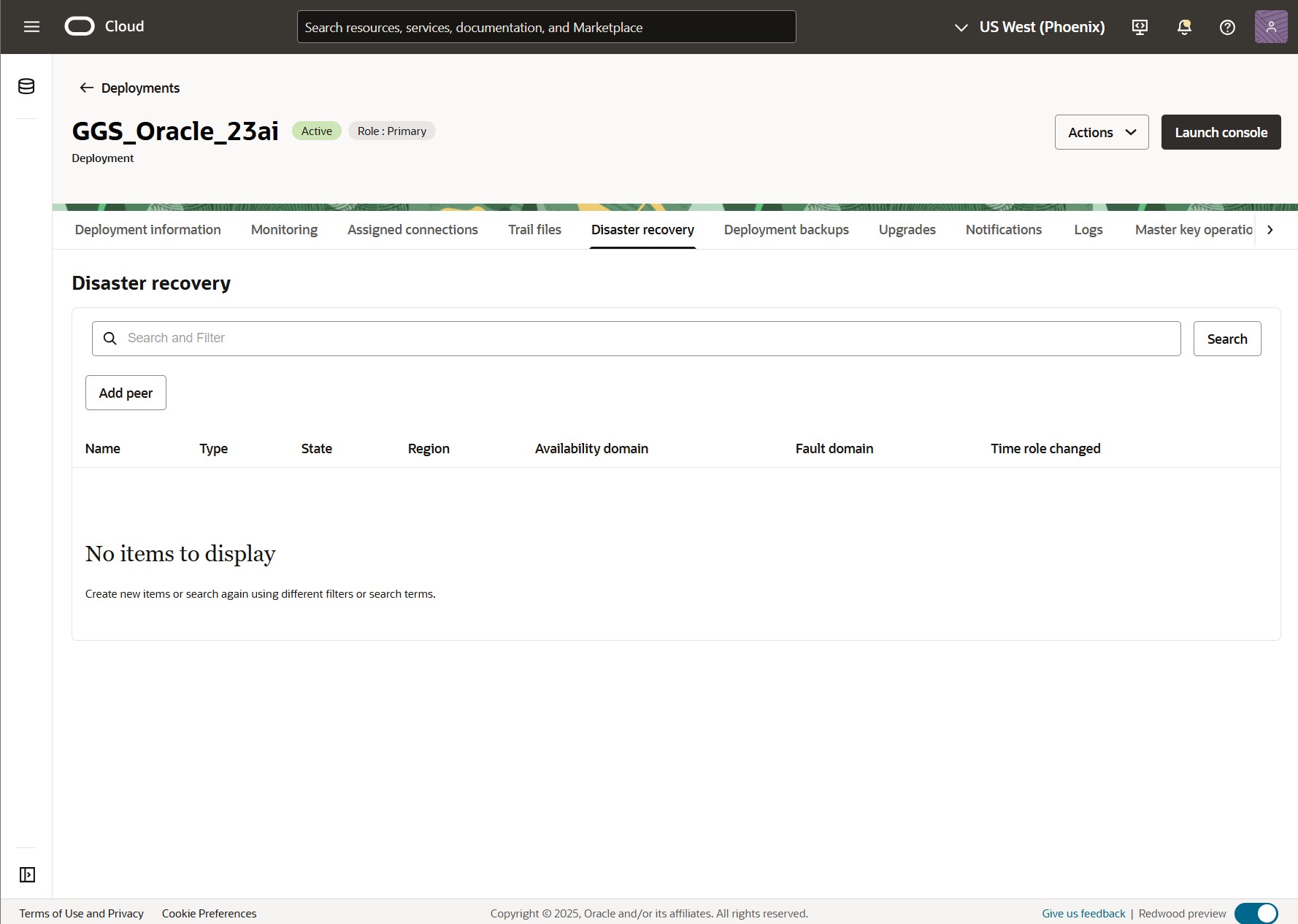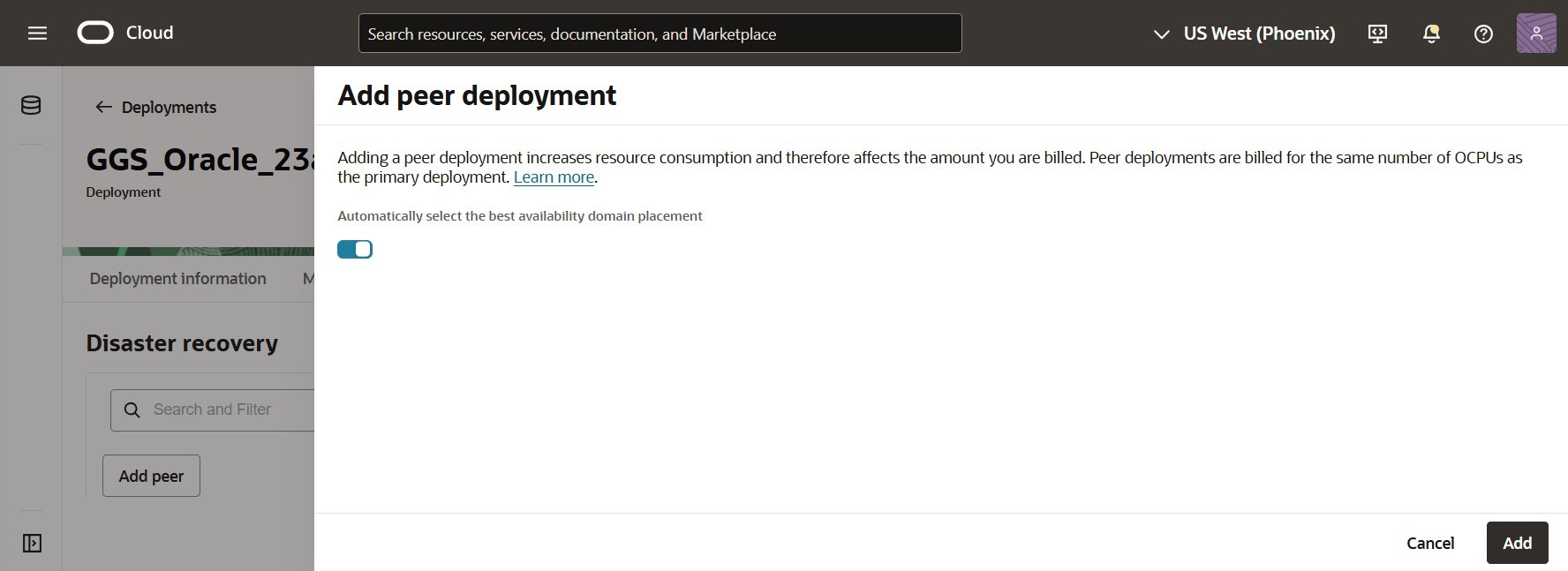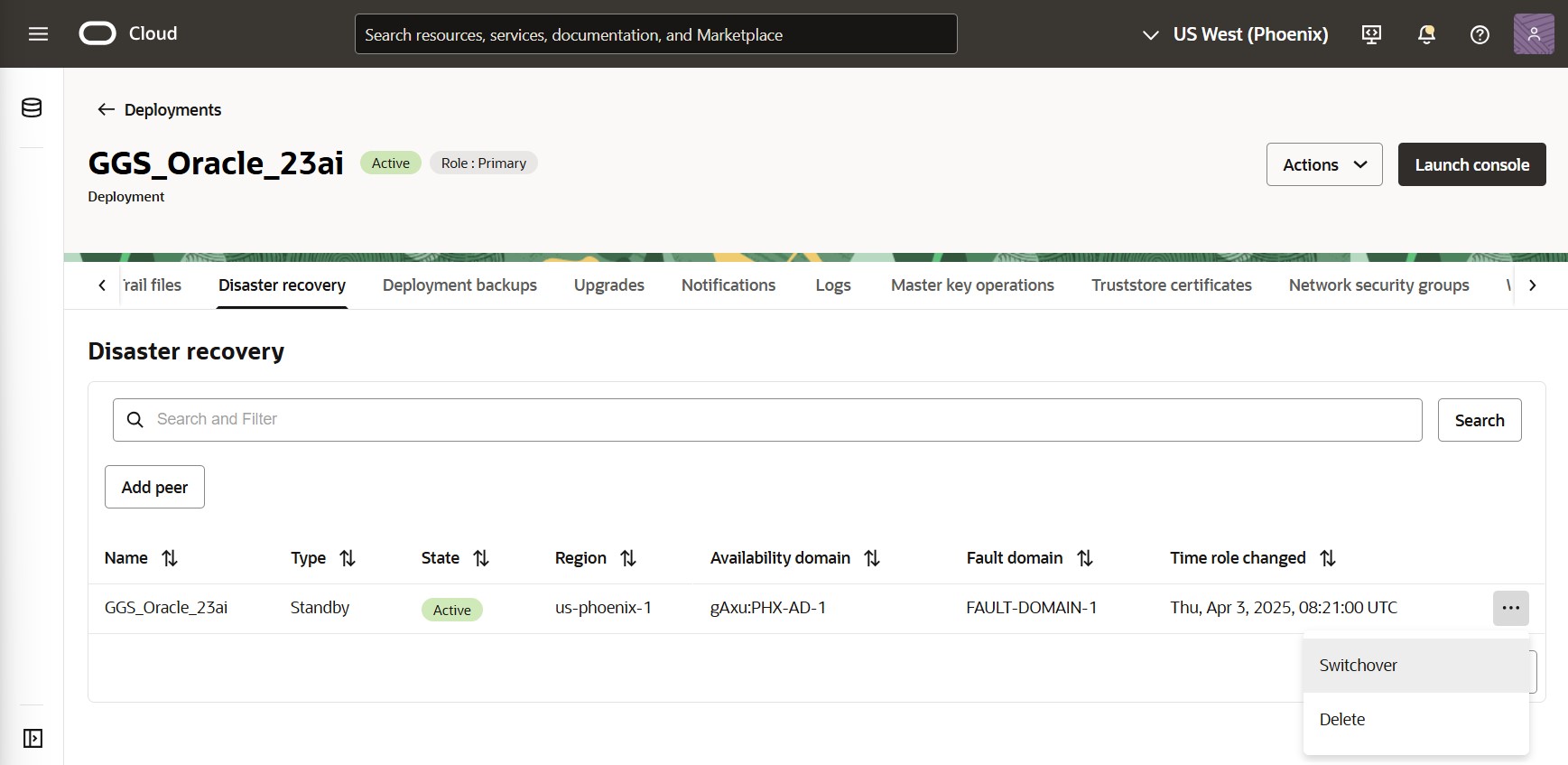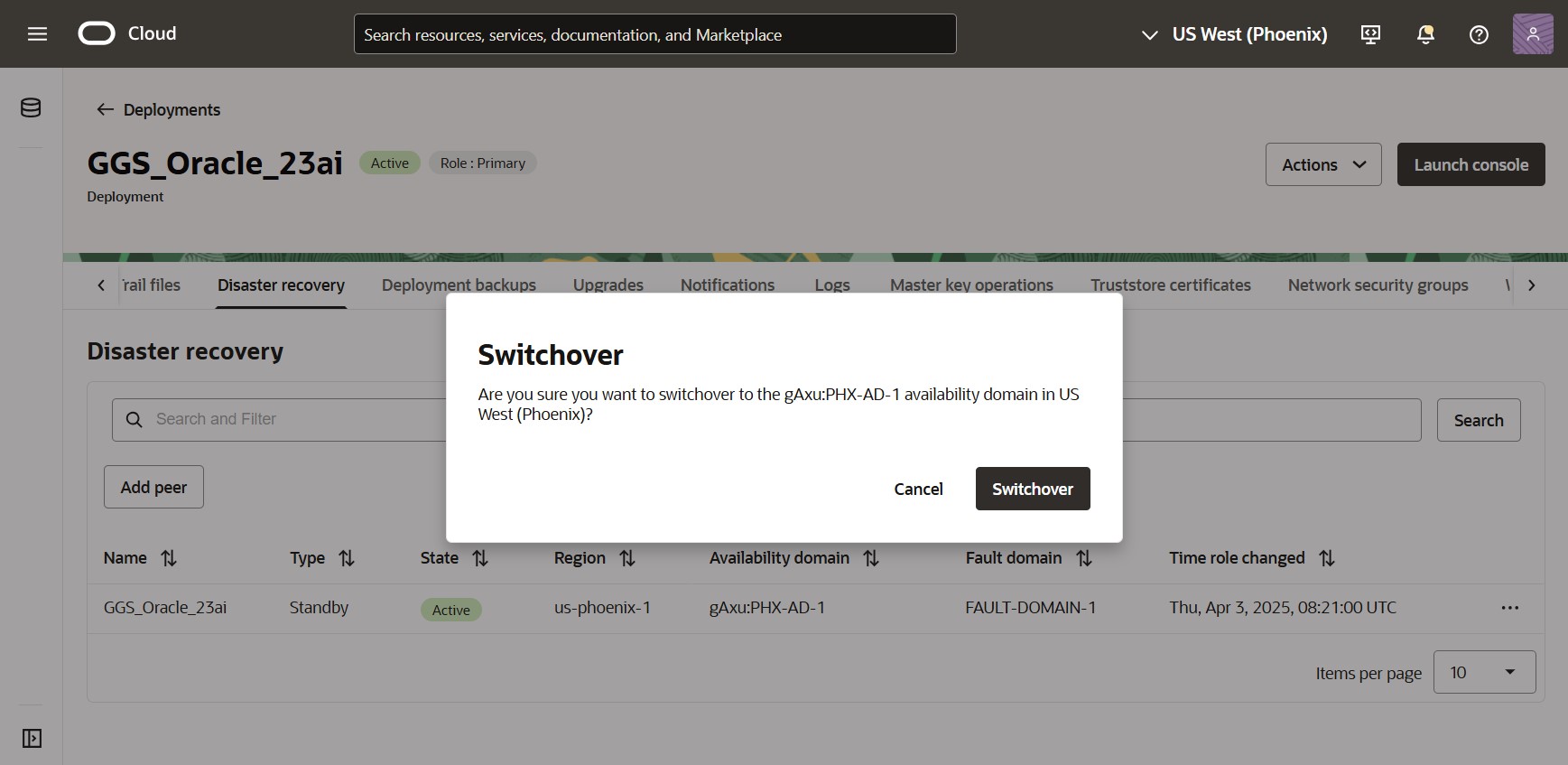We are excited to announce a new disaster recovery feature in OCI GoldenGate, designed to provide an additional layer of resilience and high availability for our users. This innovative feature supports standby peer deployments in a single OCI region across Availability or Fault Domains, ensuring that your critical data replication and integration workloads remain uninterrupted even in the event of an outage.
With this new capability, OCI GoldenGate users can easily deploy a standby instance of their GoldenGate service in the same region, which can take over in case of a primary instance failure. This means that users can minimize downtime, reduce data loss, and maintain business continuity, giving them greater peace of mind and confidence in their ability to manage and integrate their data.
Getting Started with Disaster Recovery in OCI GoldenGate
Follow these simple steps to create a standby peer deployment in OCI GoldenGate:
Add a peer
In the Console navigation menu, click Oracle Database, and select GoldenGate to access its Overview page.
Click on Deployments and on the deployment you want to use to add a local standby peer.
Click Disaster recovery.

Click Add peer on the Disaster recovery page to add a standby peer.

You can either let the service determine the best placement for your standby peer deployment or turn off Automatically select the best availability domain placement to set it manually.
If so, pick the Availability domain and optionally the Fault domain. By default, the Availability domain used by your primary deployment is greyed out and cannot be selected.

When ready, click Add to start the process.
Note: Peer deployments are billed at the same rate as primary deployments.

OCI GoldenGate automatically starts synchronizing the required metadata (configuration files, checkpoint information, trail files, etc.) from your primary deployment with its standby peer. After a few minutes, the standby deployment is Active, and you can perform a manual switchover.
Switchover to a peer
From the Disaster recovery page, click on the Actions menu next to the standby peer and click Switchover.

When prompted, click Switchover to confirm.

When the switchover completes, the standby peer is now the primary deployment, and the former primary deployment becomes the standby peer. You can access the GoldenGate console and review your processes. Processes that are set to automatically start will already be running, other processes can be started manually.
Conclusion
With this new disaster recovery feature, OCI GoldenGate users can quickly and easily ensure high availability and resilience for their critical data workloads, without requiring significant additional resources or expertise. By providing a simple, automated, and reliable disaster recovery solution, we are helping OCI GoldenGate users to further optimize their data integration and replication strategies, and to achieve even greater business agility and success.
Additional resources:
